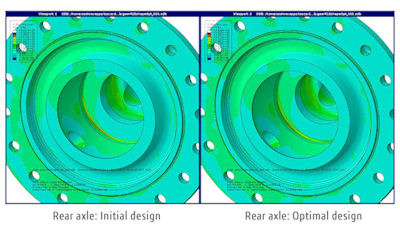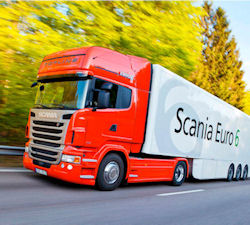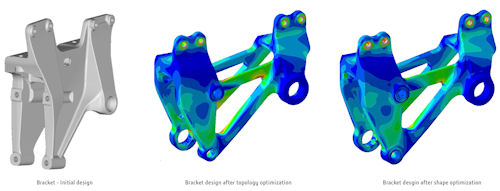
Latest News
November 14, 2013

As the European Union adapts to Euro 6 — legislation that sets the highest-ever pollution regulations on trucks and buses — global commercial vehicle maker Scania is finding new ways to meet the challenge.
Over the 20 years since Euro 1 was instituted, the Swedish-based company has had an ongoing program to develop vehicles and engines with a host of innovative technical solutions that have radically cut emissions. For additional design refinement of powertrain and drivetrain components, however, it has added the optimization software Tosca Structure to its CAE toolkit.
The software creates design concepts early in the product development process to show the potential to reduce material weight while maintaining, or even improving, rigidity and durability. Such optimized structures have helped Scania build lighter-weight vehicles that consume less fuel and produce fewer emissions, helping the company meet the Euro 6 standards that have applied to all new trucks registered in Europe since Jan. 1, 2013.
Seamless Integration
Scania s engineers work in a mixed CAE environment, using a variety of design tools. For optimization, they use Tosca Structure from FE-DESIGN — since May 2013, part of the Dassault Systèmes 3DEXPERIENCE technology portfolio under the SIMULIA brand.
SIMULIA Tosca Structure is a flexible, modular software system for non-parametric structural optimization of topology, shape and bead design using finite element analysis (FEA). With its open interfaces to FEA industry-standard solvers, Tosca Structure allows for easy integration into any existing CAE environment. This lets engineers work in their accustomed IT environment with their existing FEA models.
Scania s primary FEA solver is Abaqus, also from SIMULIA. Using Tosca Structure along with their own FEA models and knowledge base enables the engineers to exploit the full potential of optimization, because they can employ all the advanced simulation capabilities of Abaqus — such as material and geometrical nonlinearity (useful when modeling large deformation and contact) — in their optimization runs. This gives them design flexibility without time-consuming parameterization. As a result, they frequently apply Tosca Structure in the Scania product development process.
“Tosca Structure fits seamlessly into our CAE-environment, and is an important tool for our work with a simulation-driven product development process,” confirms Mikael Thellner, Ph.D., technical manager for Scania.
Case in Point
The objective of a recent bracket design optimization project at Scania was to reduce the mass of the initial cast iron design using Tosca Structure software (see Fig. 1).
 Figure 1 |
First, the design domain was defined. Functional areas and joint spaces to connecting areas were determined to be “frozen.” Three load cases and a limit on maximum stress were considered. Stiffness requirements for each load case helped ensure that material was eliminated in the “right” places.
To build a manufacture-oriented design, the minimum required member size was ensured during optimization, and possible undercuts were avoided. As a consequence, the optimal design was also feasible for an efficient production process.
Following the topology optimization, a shape optimization was carried out, and the new bracket design generated 30% in material savings while fulfilling the required stress limits. The weight reduction of components contributed significantly to a reduced weight of the vehicle itself. This benefitted in an increased load-carrying capacity, or lower fuel consumption, and fewer carbon dioxide (CO2) emissions.
Shape Optimization: A Rear Axle Challenge
Another example of successful optimization at Scania using Tosca Structure was a rear axle application (see Fig. 2). This time, an optimization analysis was considered in a later phase of product development. Improvements in terms of durability were required to pass physical testing, and only small changes were allowed to be made in the design of the component/part.
 Figure 2 |
A shape optimization approach was chosen to investigate possible stress reductions without any major design change. The main objective of the analysis was to minimize von Mises stresses while considering the turning constraint.
Following the optimization task, the new design of the rear axle showed a significant stress reduction of 26%. Transferred into damage values, this resulted in a 233% increase in fatigue life. Tosca Structure delivered a final result that fit into the overall product strategy — and generated considerable time savings in comparison to a trial-and-error approach with conservative test runs.
Info
Subscribe to our FREE magazine, FREE email newsletters or both!
Latest News
About the Author
DE’s editors contribute news and new product announcements to Digital Engineering.
Press releases may be sent to them via [email protected].






